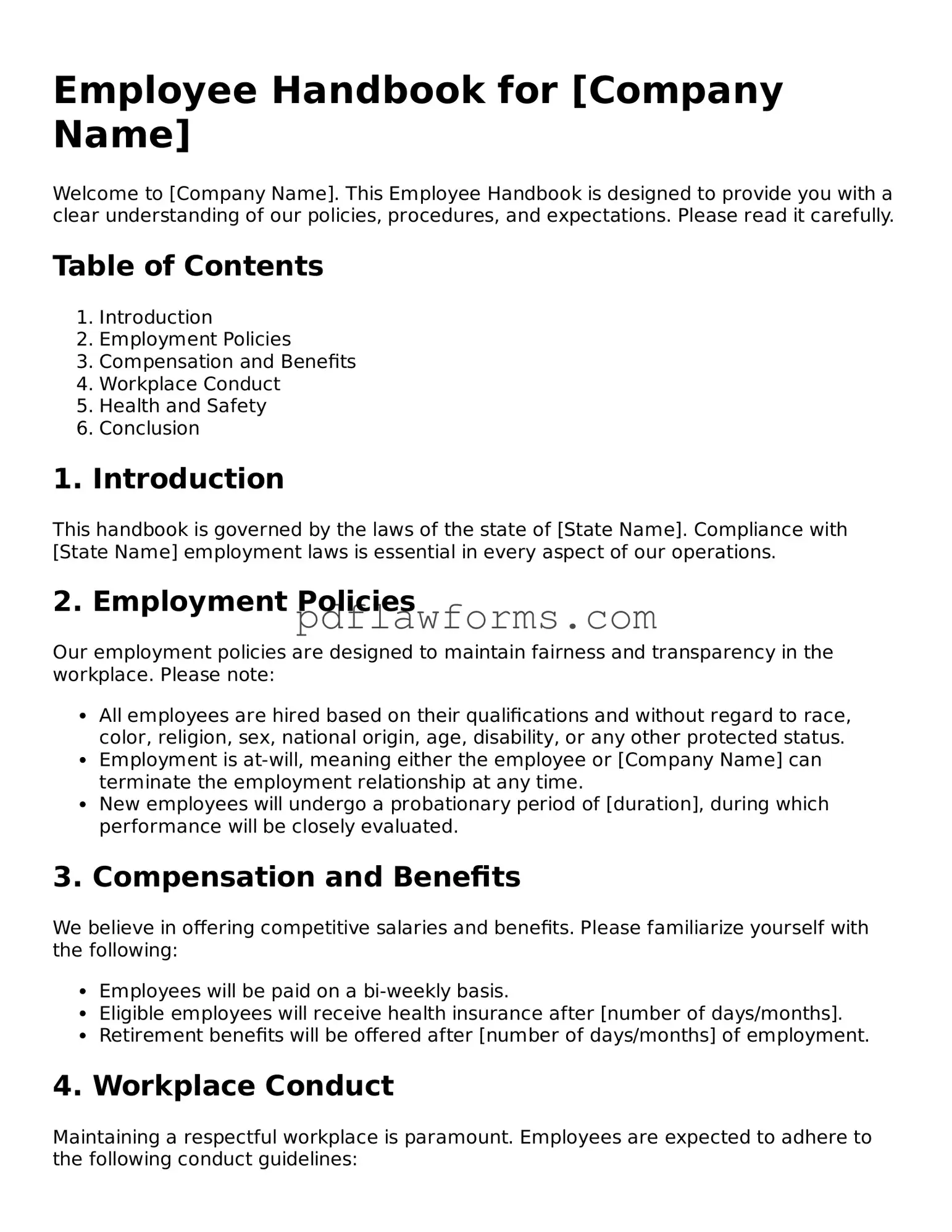Official Employee Handbook Form
The Employee Handbook form is a crucial document that outlines a company’s policies, procedures, and expectations for employees. It serves as a guide for employees to understand their rights and responsibilities within the workplace. To ensure compliance and clarity, it is essential to fill out the form accurately; click the button below to get started.
Make My Document Online
